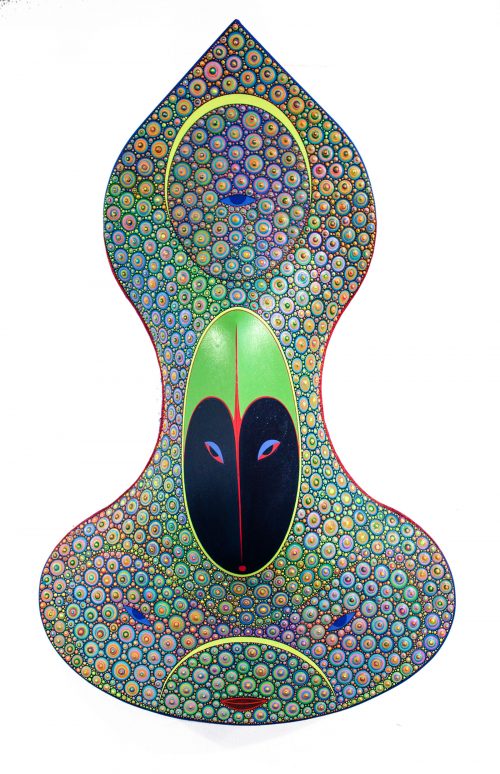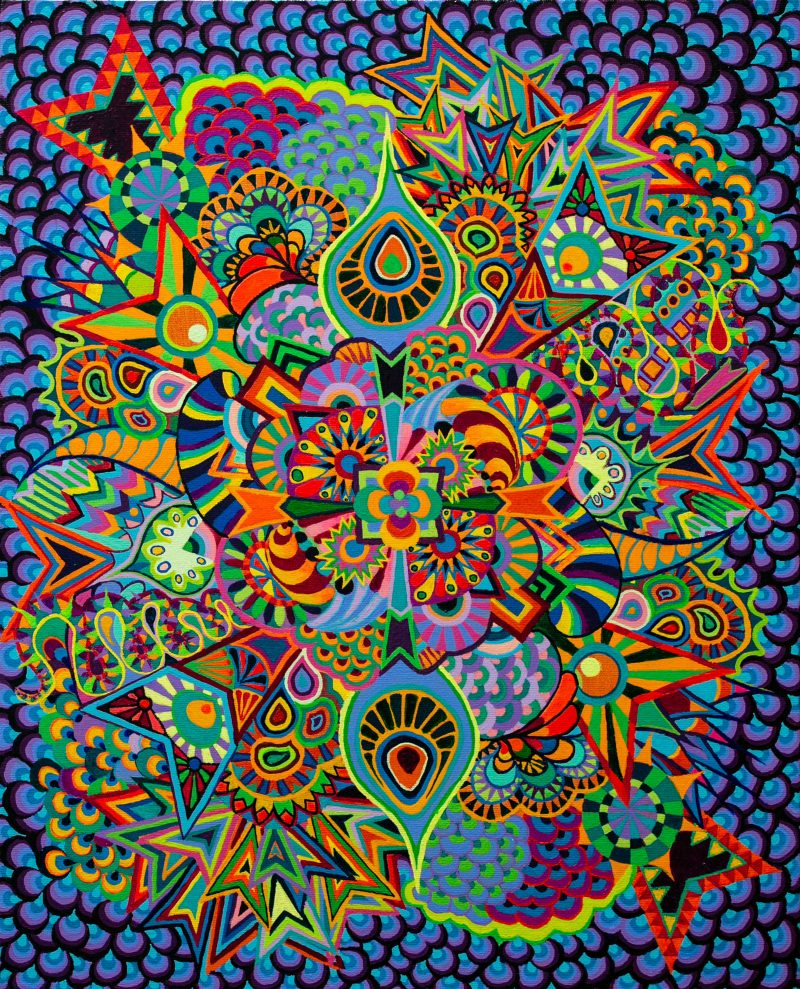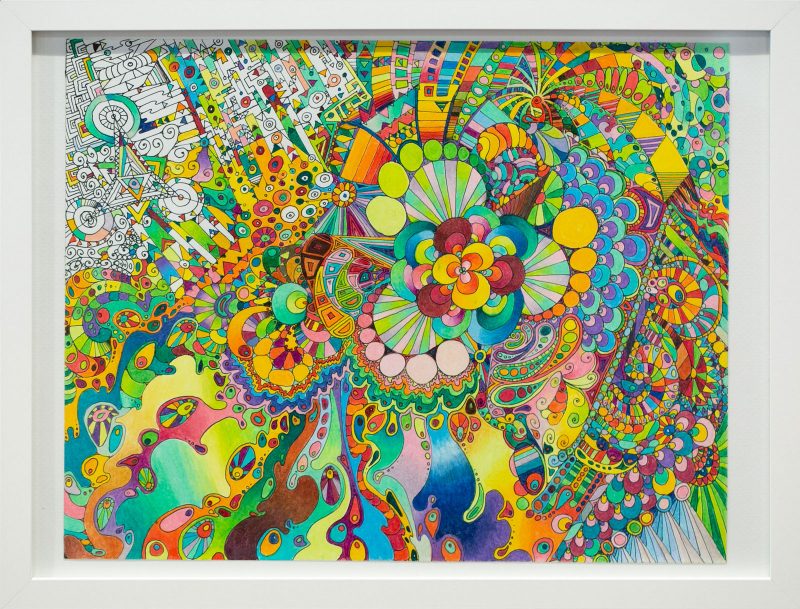ART REVIEW: Patterns of Obsession, mesmerizing two-person exhibit at Philadelphia’s Magic Gardens
 |
Claes Gabriel, Ghost Spirit, 24″h x 17″w, Acrylic on shaped canvas, 2016. Photo courtesy of Paradigm Gallery. |
As you enter the first gallery space, Patterns of Obsession seems to set up a fairly simple media-based divide: Claes Gabriel’s works are sculptural, figural, and totemic and Chalfen’s works are mainly paintings on panel or canvas, and abstract.
Gabriel’s often wall-mounted forms are densely patterned and brightly colored and visually echo West African masks and Pacific Northwest indigenous art, especially in his use of strong delineations between color sections and incorporations of hybrid animal forms. The artist’s sculptural shapes are organic sinuous curves, with embellishing patterns highly organized or uniform in execution. It’s not hard to see a figural element to Gabriel’s works: you can pick out half-lidded eyes, the bridge of a narrow nose, a dot of a mouth under what resembles a glorious headdress.
Chalfen’s abstract paintings burst with color and tiny, geometric forms scattered in intricate patterns, almost appearing inspired by pixelated digital art. His “Sibling in Dirt” and “Sibling in Velvet” resemble in part the zany, tightly packed compositions of Takashi Murakami. The occasional inclusion of collaged sheet music adds a note (pun intended) of regularity and stability amidst the wild, fractal color patterns that catch the eye like gems.
 |
| Claes Gabriel, Queen of Time, 50"h x 36"w x 12"d, Acrylic on shaped canvas, 2016. Photo courtesy of Paradigm Gallery. |
Thematic similarities seem to rise to the fore with echoes of ritual and traditional forms used by cultures subject to colonization in Gabriel’s works, and remixed shapes and fragments resembling components of Aztec calendar designs in Chalfen’s painting “Imperial Response.”
 |
| Andrew Chaflen, Imperial Response, 16″w x 20″h x 1.5″d, Acrylic on canvas, 2017. Photo courtesy of Paradigm Gallery. |
Oddly enough, the additional wall texts set up a dichotomy between Gabriel’s and Chalfen’s styles, calling Gabriel’s “Patterns as Culture,” and Chalfen’s, “Patterns as Rhythm.” This artificially sharp divide sells the nuances of Patterns of Obsession short. Chalfen’s inclusion of musical compositions and quasi-digital forms is not merely a type of rhythm, but a cultural artifact as well, as the notes of music and bytes of data are modes of communication across and within cultures. Similarly, the humanoid elements of Gabriel’s masks and sculptures conjure up the rhythm of life and of human continuity. Indeed, the reason we see Gabriel’s works in Patterns of Obsession as potential masks is because we recognize how two oval forms placed side-by-side above a thin, narrow shape above a dot or line implies a human face. Regardless of where in time or space we stand, this organization, or rhythm, of compositional elements has meaning to us.
 |
| Andrew Chaflen, Soap Bubble, 14″w x 11″h, Pencil and ink on paper, 2012. Photo courtesy of Paradigm Gallery. |
In a way, staging Patterns of Obsession at the Magic Gardens makes a perfect kind of sense: the works of art collaborate with one another in unexpected ways that nonetheless manage to gel, and demonstrate active learning, just as the Magic Gardens themselves were a product of collaboration that made non-traditional objects and materials into an art experience.
Comments
Post a Comment